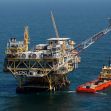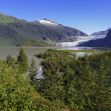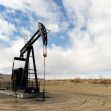Alaskan environmental groups have filed a request with the federal courts to block the Interior Department from moving forward with an auction of oil and gas leases in the Arctic National Wildlife Refuge (ANWR or Refuge). The environmental groups who have filed the request include the National Audubon Society, the Gwich’in Steering Committee, and the Native Village of Venetie Tribal Government. These and other environmental groups are asking for a decision to be made by January 6th, 2021, in order to stop the leases from being awarded.
The environmental groups accuse the Interior Department of hastily moving to sell the leases. There is speculation that this is because the program would go forward under the current administration and not the incoming administration as President-elect Biden has voiced his support of keeping this land protected.
In their request, the National Audubon Society said the following of the Interior Department's desire to move forward so quickly: “Its haste threatens permanent harm by locking in government decision making and scarring the Refuge in ways that cannot be undone. Allowing it to implement the Final Environmental Impact Statement and Record of Decision now would cause irreparable harm to Plaintiffs and their interests in viewing wildlife, conducting scientific research, and engaging in recreational activities in this globally unique environment.”
Implications of the Lease Auctions
Environmental groups, including those who filed the motion to block the lease auction, argue that going forward with the oil and gas leasing program will be devastating to the Refuge. The environmental groups point to the already devastating impact climate change has had on the area.
Environmental groups explain that the lease program would devastate the area further as drilling and industrialization of the land will lead to harmful greenhouse gas emissions. Additionally, potential seismic operations, which will likely include blasting underground to map out different resources and collect underground imaging, will disrupt the ecosystem and threaten already impacted species in the area. Some of the species environmentalist groups point to include caribous, polar bears, and a range of migratory birds.
The environmental groups also stress that development in the area would take away from the recreational benefits that it has provided to local and surrounding communities.
In the request, the environmental groups also highlight the lack of time and consideration taken into understanding the negative impact the oil and gas lease program will have on the area.
Protections Over the Arctic National Wildlife Refuge
The Arctic National Wildlife Range (the Range) was established in 1960 as a way to protect and preserve the wildlife, the wilderness, and the environment as a whole for the many recreational purposes it served. Congress expanded coverage of the Range in 1980 and renamed it the Arctic National Wildlife Refuge (the Refuge). The purpose of the Refuge was to help repopulate the area through management and protection of wildlife populations and ensuring that the environment was able to provide the necessary habitat to keep the local animals thriving.
The protections that the Refuge offered were mandated under the Alaska National Interest Lands Conservation Act (ANILCA). ANILCA specified that the Refuge would be used to fulfill international treaties related to wildlife and fish, protect substance use opportunities, and maintain the quality of the water and the amount needed for the Refuge to be an ecosystem that thrived.
Additionally, Alaskan environmentalist groups point to the fact that ANILCA specifically made mention of keeping activity related to oil and gas out of the area. However, in 2017, ANILCA was amended by Congress, removing the ban on oil and gas development in the area. In doing so, Congress mandated two lease programs that would take place on December 22nd, 2021, and again in 2024. Though the Act was amended to allow for oil and gas development, the environmental protections for the areas were kept in place.
The environmental groups are asking the courts to enter a preliminary injunction to halt the gas and oil lease program from proceeding.






